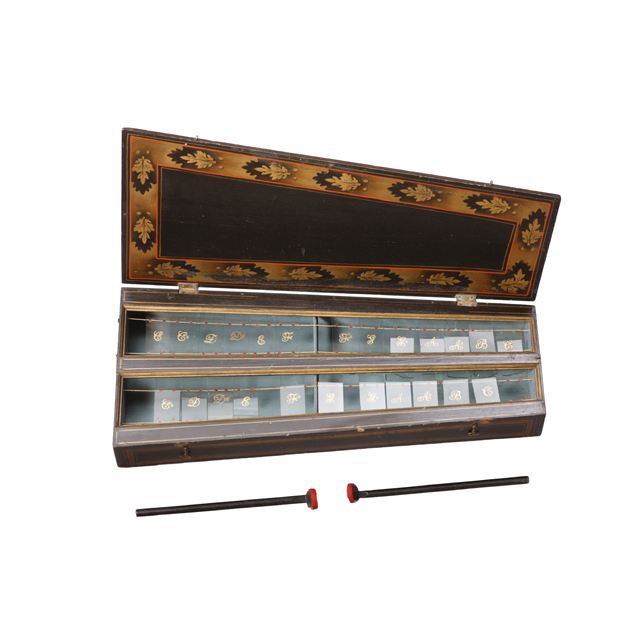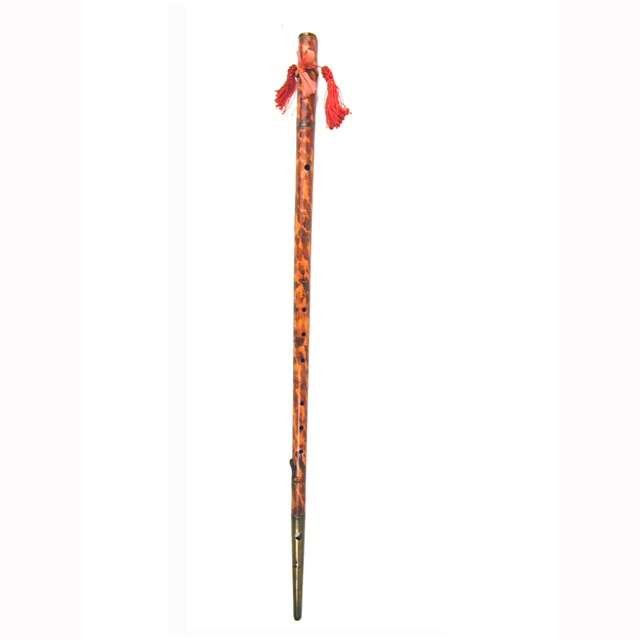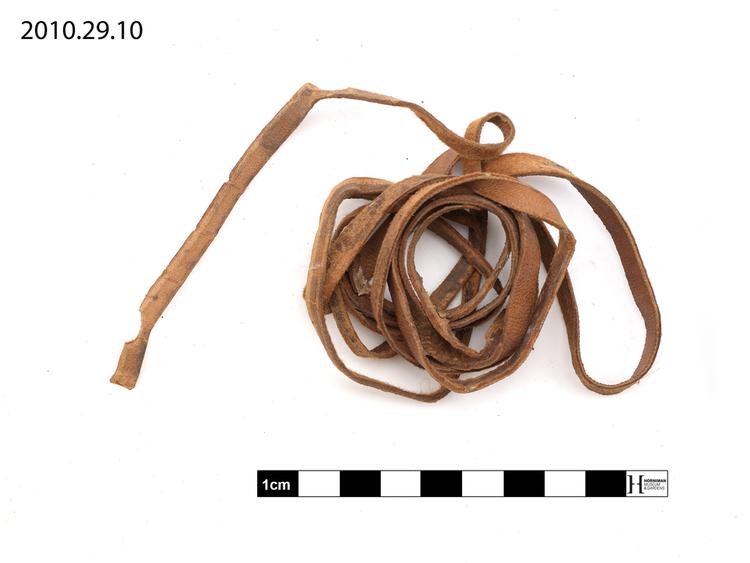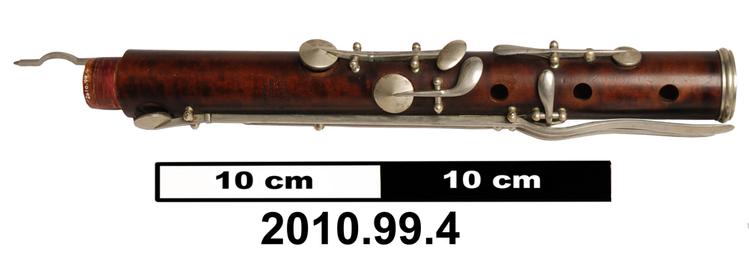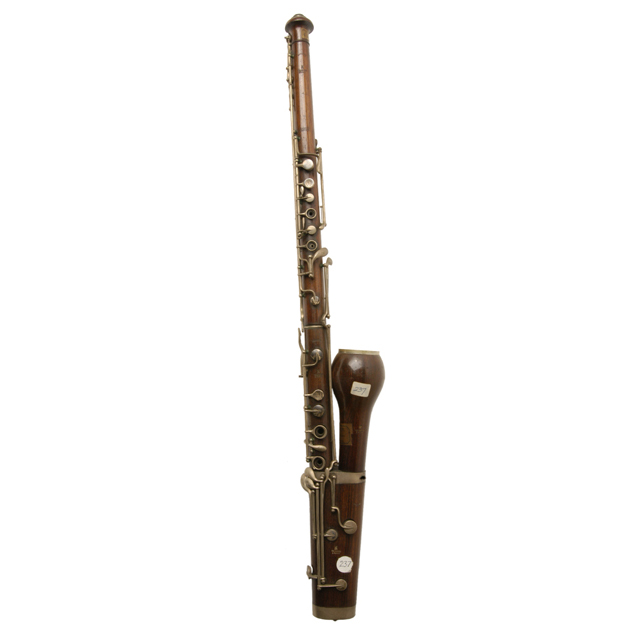
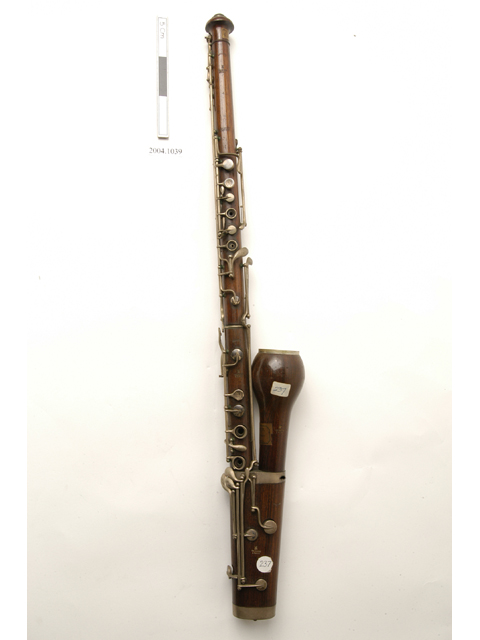
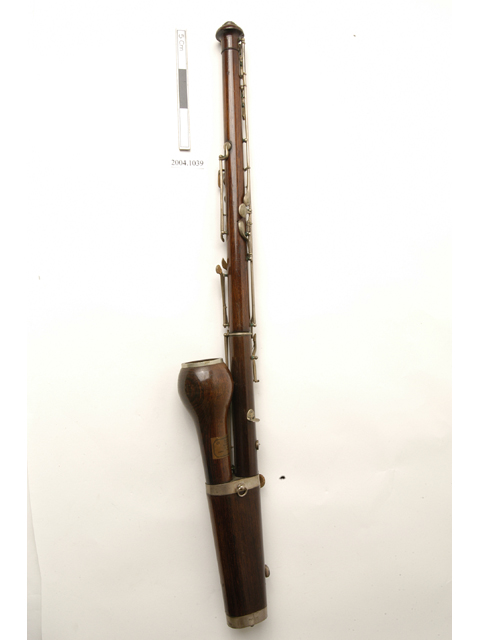
Baritone oboe, bass oboe, in C. Rosewood with silver keywork and ferrules. Keys have leather pads. Barret's combined thumb-plate and conservatoire system, semi-automatic octave keys. Four joints: upper joint, lower joint, butt joint and bell. Crook missing. String lapped tenons. Rising bulbous bell offset to the left by butt joint. Upper joint stamped: BREVETE/TRIEBERT/A. PARIS/BARRET/A. LONDRES; lower joint stamped: BREVETE/TRIEBERT/ A. PARIS; butt and bell stamped; TRIEBERT/A. PARIS; all inscriptions incorporate castle motif. Butt and bell inscriptions highlighted in gold paint. Paper label adhered to bell has in D.J. Blaikley's hand: 81. BARITONE OBOE/ROSEWOOD./15. S.K. & 4.RINGS/VERY FEW MADE./MODERN
overall: 742 x 95 x 95 mm: measurements by Documentation Section.
By the early 19th century, the standard oboe in C and the cor anglais in F had become firmly established as the primary soprano and alto double-reed instruments of the orchestra. However, a number of different instrument designs vied for the baritone role including the dulcian, the tenoroon and various forms of large oboe. The sounding length of these oboes made it difficult to position the sound holes in such a way that they could be reached by the player's fingers. The earliest known surviving baritone oboe, made by Charles Bizet around 1750, solves the problem by having the tone holes bored obliquely so that they emerge at the surface in convenient positions. This Triébert design takes a different approach; it borrows the swan-necked crook and butt joint from the bassoon, but is otherwise modelled closely on the standard oboe. None of these instruments attained much popularity, as their various ergonomic adaptations were perceived to compromise the desired oboe tone. This led Wilhelm Heckel to develop his heckelphone, which first appeared in 1904. The heckelphone has a straight body but retains the curved crook, and the holes are reached with lengthened key levers. The heckelphone also has a wider and more conical bore than earlier baritone oboe designs, giving it a more powerful and more distinctively oboe-like sound.



